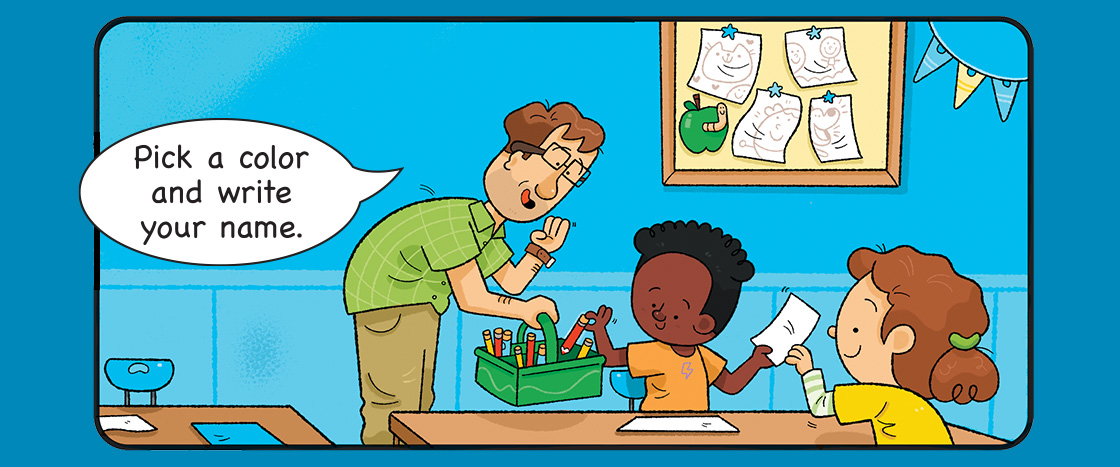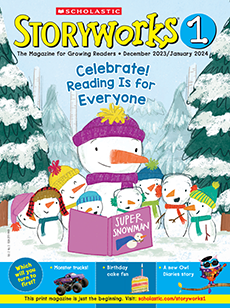
Art By Elio
Do I Need Help?
By Katie Mach
From the September 2023 Issue
Learning Objective: Students will learn characteristics of a comic and discuss a story’s problem and solution.
About the Story
English Language Arts Focus
Print features
Problem and solution
Social and Life Skills Focus
Asking for help
Solving problems
Step-by-Step Lesson Plan
Implementation
Whole Group: morning meeting, community-building time; Small Reading Group
Pairings and Text Connections
- From the Storyworks archive: “Sticky Situation: Who Will I Play With?”, September 2022
- Suggested books: Leo the Late Bloomer by Robert Kraus, It’s Okay to Be Different by Todd Parr
Before-Reading Resources
Video: What's In a Comic? (5 minutes)
- How comics use pictures, thoughts, and dialogue to show what’s happening in the story.
Suggested Reading Focus
SEL: Asking for help (15-20 minutes)
- Have students look at the Mini Graphic in their magazines and ask what they notice about how the story is organized. Help students differentiate between a speech bubble and a thought bubble by finding these in their magazines.
- Read the Mini Graphic out loud to students while they follow along.
- Check for comprehension. What is Jack’s problem? What does he need?
- Use the Talk It Out prompts to facilitate discussion. Have students ever experienced something like this themselves? What helped them? Who helped them? What advice do they have for Jack?
After-Reading Skills Practice
- Skills: Features of print/School helpers (15 minutes)
Extension Social and Life Skills Activity
Skills: Asking for help/Solving problems (15 minutes)
- Have students take turns acting out Jack’s problem from the Mini Graphic. They can practice showing how they would advise Jack to ask for help or to solve his own problem. They can also act as possible helpers.
- Create a “Solution Center” for your classroom, where students can map how big their problem is and what resources are available to help them solve it. Chart student responses to the following questions and leave them displayed in your classroom:
- What are some problems in the classroom that students can solve independently?
- What are some problems that might require a teacher’s help?
- What are words I can use to help me get what I need in the classroom?
Text-to-Speech
